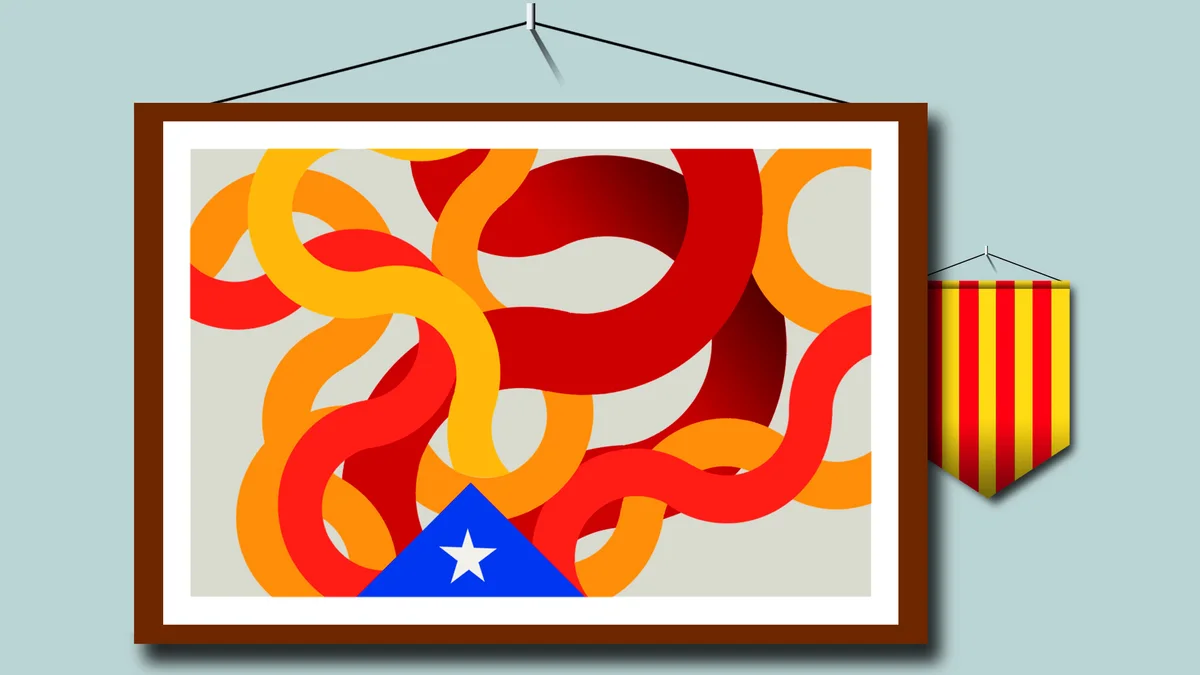“Shame of Chicago, Shame of the Nation,” which airs Thursday nights for the next four weeks on WTTW, has one of those great old-fashioned muckraking titles, the sort once attached to exposes of the meatpacking industry and Al Capone. Except there’s nothing truly old-school or entirely vanquished here. This four-part documentary journeys from Trumbull Park to the northern suburbs. It picks apart Chicago’s disgraceful legacy of housing discrimination and weaponizing real estate policy, and perp walks that ugly past into an often uglier present and makes a compelling argument for housing reparations.
The past is never really past, history is never done with us, and so on.
Yes, hours of black-and-white reels full of hateful white faces screaming through neighborhood marches, patient Black families dodging spittle and bombs, tastefully lit contemporary talking heads giving rational context to irrational images. This is PBS. If you’re even a B student of Chicago history, much will look familiar: You’ve seen the clips of Lorraine Hansberry’s “A Raisin in the Sun” and Sidney Poitier being told by a hat-in-his-hands white neighbor that Poitier’s character (based on Hansberry’s father, who bought a Lawndale home in 1937 partly to force integration) doesn’t have anything in common with harder-working neighbors. Maybe you’ve read Ta-Nehisi Coates’s landmark journalism, “The Case for Reparations,” of which this documentary at times seems to adapt. (Coates is among the historians, homeowners and writers interviewed.)
But there’s a saying about new works on familiar topics, and it applies to any medium — books, films, what-have-you. It says that there’s always room for accessibility and clarity.
What “Shame of the Nation” brings to the history of Chicago and social justice is a terrible clarity at a time when at least half the country refuses to accept structural racism is a thing, and assumes their own grievances take priority over the pain of others. The film plays at times like a brisk walk through a model home that’s been crumbling for decades, opening up doors to rooms that were bricked over, spotlighting the architects. There are plenty of heroes to cheer, of course. Filmmakers Chris L. Jenkins and Bruce Orenstein may not be the most stylish of storytellers — Jenkins is a former Washington Post reporter, Orenstein is a native Chicagoan who has been making documentaries on local history for years. But they are terrific at identifying pocket histories within a history, connecting the way, say, a single brave act echoes in a suburb miles away, decades later.
They’re even better at laying out the villains behind the villains, the policy makers behind the architects. It’s a darkly funny thing about American life that the conspiracies many want to believe bind their arms and sap their freedom are never those that exist.
Take the University of Chicago/Northwestern University Conspiracy.
Jenkins and Orenstein don’t call it that, but I do.
See if you follow: Nathan MacChesney, a former special state’s attorney for Illinois, serves as general counsel for the National Association of Real Estate Boards and drafts a “Chicago Restrictive Covenant” to bring “order” to how local real estate boards evolve neighborhoods. Supreme Court decisions dissolve big challenges, but MacChesney needs an “intellectual argument” to justify it. He needs a buy-in if he wants a nationwide standard. So he contacts leading economist Richard Ely, who goes about training students at Northwestern to devise a hierarchy of who should own homes in the United States. They draft an actual pecking order: Danish at the top, then German, English; further down Italians, Hindus, Hebrew, Chinese; and at the bottom, Black Americans (followed, at the very bottom, by Native Americans). This becomes a real estate industry standard, and later the foundation for Homer Hoyt, a UC economist contacted by MacChesney, who writes a manual that cites race as the key to a neighborhood’s value.
Hecklers jeer at civil rights demonstrators during a march on July 14, 1966, to protest against housing discrimination in Gage Park and other areas of Chicago. Several were arrested, several were injured and cars were damaged. (Chicago Tribune historical photo)
And that’s not to mention the rise of local neighborhood associations as proxy tools for segregating blocks — a tactic other cities adopt to bypass legal restrictions. Or the pocket history of Hyde Park as a pioneer in shamelessly alienating non-whites, no matter how long they’ve lived there.
As insensitive as it sounds, Jenkins and Orenstein nail the tick-tock streamlining of housing segregation in Chicago with such clean, insidious pacing — even employing animated explainers at times, which become cloying and unnecessary — I flashed to Martin Scorsese and Steven Soderbergh movies dedicated to the art of the hustle. The fix is in here. The difference is there’s no perverse joy in identifying with the criminals.
Consider the Deerfield Conspiracy.
Again, my name. To be fair, it could be the Western Springs Conspiracy or Oak Park Conspiracy. Each took pains to ensure Black families were not welcome. But “Shame of the City” is especially sharp on the history of Deerfield, which organized against a development in the late 1950s intended to show integrated neighborhoods can work. There’s footage of a town meeting in which resident after resident explains they are not racist but segregation has worked so well in the South … why something new? Deerfield solves this in not-quite novel yet audacious fashion: It puts the question to voters, schedules a vote days before Christmas and takes race off the ballot. Instead of a real estate development, voters are asked to approve a new park on the same land. Which gets approved, by a 21-to-1 margin. Then they name the park after its champion.
Members of the Chicago Youth Committee on Civil Rights hold a demonstration at the site of a proposed integrated housing project in Deerfield on Christmas Day, 1960. The group held “kneel-ins” at five area churches earlier that day. (Associated Press)
There are plenty of heroes: The esteemed Black chemist Percy Julian who moves to Oak Park, gets his water shut off the city on day one, but eventually makes that suburb a model of integration. West Side homeowners who push back on redlining. The Contract Buyers League, a North Lawndale group that persuades realtors to sell homes to Black residents at (lower) white prices; it’s estimated the League saved Black Chicagoans at least $3.2 billion.
Astounding numbers like that get inserted throughout the series. You piece together the picture: Racial covenants — agreements among realtors and homeowner associations excluding Black families from homes in certain neighborhoods — eventually apply to at least 40 square miles of Chicago. And home ownership is a leading indication of generational wealth within a family. So, of course, even decades after redlining and restrictive racial covenants ruled Chicago, there’s a 20-to-1 gap in generational wealth between white families and Black families.
Members of the Contract Buyers League demonstrate with contract home buyers in front of the Federal Building on May 19, 1970. (Arthur Walker/Chicago Tribune)
Sounds like conspiracy.
When the economy collapses in the Great Depression, the New Deal creates the Home Owners’ Loan Corporation, which refinances a fifth of American houses — but does not offer services to neighborhoods with “inharmonious races,” as defined by Northwestern and UC scholars. Maybe you’ve heard this. “Shame of Chicago” does not feel fresh, but in arranging so much so thoughtfully — the birth of the Chicago Housing Authority, the bombs of Trumbull Park, the construction of the Dan Ryan Expressway, “Birth of a Nation,” the 1893 World’s Columbian Exposition, how fictions can manufacture evidence — you can see how the way things are were not always meant to be the way things are.
Three years after the Chicago race riot of 1919, the Chicago Commission on Race Relations released a 672-page report remarkably prescient for its time. This city, it says, will get worse the more it segregates. It lays blame on realtors, politicians, journalists. Davarian Baldwin, an American Studies professor at Trinity College in Connecticut and author of books on race in Chicago, tells the filmmakers it’s very politely worded. It identifies issues, then predicts the future of Chicago. Instead, city leaders double down and plunge ahead with redlining. “You have to look back and say, ‘How could the world of today have been different if political leaders in that moment had taken seriously one or two of the modest recommendations that came out of that report?”
We’ll never know.
cborrelli@chicagotribune.com





